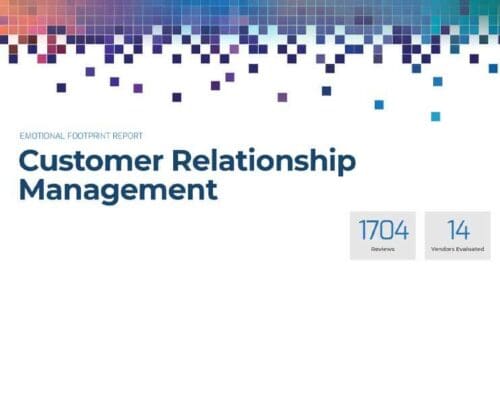Customer Relation Management (CRM) systems allow businesses of all sizes to optimally manage customer information, and in turn create richer, more valuable relationships with them. While excellent customer service has always been deemed important in the business world, it has seen a rise in appreciation over the past decade, due in large part to recent advancements in technology and social media.
The degree to which a company can provide a positive and memorable customer experience can be a determining factor for success in many aspects, including, but not limited to, customer loyalty, marketplace differentiation, and capturing new clients. Thus, CRM technologies have taken a spotlight amongst business software systems.
In an effort to gather data regarding the uses, benefits, and perceived value of CRM technology in the workplace, SugarCRM, along with CITE Research, conducted a survey of 400 professionals from the US and UK. These 400 respondents answered a series of questions pertaining to their experiences with CRM and other business technology tools.
The following is an overview of the findings.
CRM and technology: Benefits and barriers
The first part of the survey explored the ways in which companies use various technologies toward the achievement of their overall sales strategies, and any barriers associated with these systems.
There is an ever-increasing number of innovations available for managing and organising business activities today. Yet, when asked to identify the tool used most frequently by their organisations to increase sales team effectiveness, the majority of respondents (69%) named CRM; more-so than even other technologies.
The tools that participants showed the most interest in were those that help them gather data, save time, and improve productivity.
As the majority of senior management professionals find value in CRM technologies the SalesTech report also examined the factors and barriers which might prevent companies from implementing these software solutions.
Despite the identified concerns, companies were found to prioritise investing in new tools for their sales teams, as they are vital to the success of businesses today. The annual investment per employee was examined.
Building relationships: Time and trends
The second part of this report investigated how businesses research leads and establish new client relationships.
Identifying and attracting new leads are challenging-enough tasks for any sales team. Once leads have been generated, though, it is up to the sales reps to establish lasting relationships with them.
Time is valuable, and the less planning time required for each sales conversation, the more clients a sales team can reach. However, according to the the report, the vast majority of sales professionals spend over 30 minutes preparing for a meeting with a new prospective client, with many dedicating a significant amount more.
As trends in consumer technology evolve, sales representatives must adapt to these changes in terms of how and where they gather data about their leads. While company websites are still identified as one of the top information sources used, younger sales professionals were found to be increasingly moving toward other platforms and social media outlets to research their potential clients.
CRM: Bringing value to sales
Clearly, there are many benefits to incorporating a CRM system into an organisation’s sales strategies and business functions. The most important of these, according to respondents, is the ability to improve the customer experience that a company can provide to its clients.
To stay ahead of the competition, companies must remain aware of developments in the future of sales technology.










